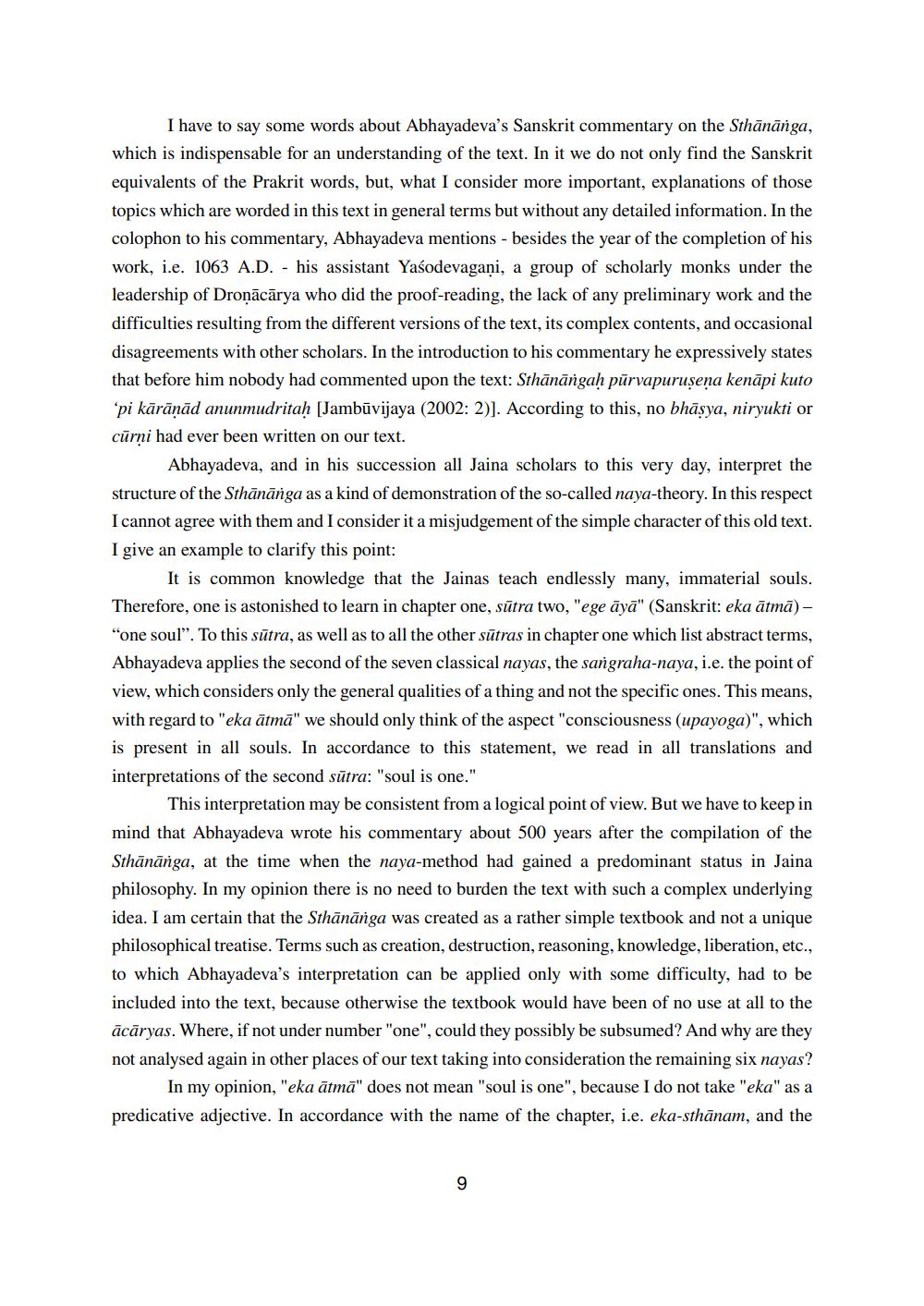Book Title: Sthanangasutra Author(s): Kornelius Krümpelmann Publisher: ZZZ Unknown View full book textPage 9
________________ I have to say some words about Abhayadeva's Sanskrit commentary on the Sthānānga, which is indispensable for an understanding of the text. In it we do not only find the Sanskrit equivalents of the Prakrit words, but, what I consider more important, explanations of those topics which are worded in this text in general terms but without any detailed information. In the colophon to his commentary, Abhayadeva mentions - besides the year of the completion of his work, i.e. 1063 A.D. his assistant Yaśodevagani, a group of scholarly monks under the leadership of Droṇācārya who did the proof-reading, the lack of any preliminary work and the difficulties resulting from the different versions of the text, its complex contents, and occasional disagreements with other scholars. In the introduction to his commentary he expressively states that before him nobody had commented upon the text: Sthänängaḥ pārvapuruşena kenapi kuto 'pi kārāṇād anunmudritaḥ [Jambūvijaya (2002: 2)]. According to this, no bhāṣya, niryukri or cūrṇi had ever been written on our text. Abhayadeva, and in his succession all Jaina scholars to this very day, interpret the structure of the Sthānānga as a kind of demonstration of the so-called naya-theory. In this respect I cannot agree with them and I consider it a misjudgement of the simple character of this old text. I give an example to clarify this point: It is common knowledge that the Jainas teach endlessly many, immaterial souls. Therefore, one is astonished to learn in chapter one, sūtra two, "ege āyā" (Sanskrit: eka ātmā) – "one soul". To this sutra, as well as to all the other sutras in chapter one which list abstract terms, Abhayadeva applies the second of the seven classical nayas, the sangraha-naya, i.e. the point of view, which considers only the general qualities of a thing and not the specific ones. This means, with regard to "eka ātmā" we should only think of the aspect "consciousness (upayoga)", which is present in all souls. In accordance to this statement, we read in all translations and interpretations of the second sutra: "soul is one." This interpretation may be consistent from a logical point of view. But we have to keep in mind that Abhayadeva wrote his commentary about 500 years after the compilation of the Sthānanga, at the time when the naya-method had gained a predominant status in Jaina philosophy. In my opinion there is no need to burden the text with such a complex underlying idea. I am certain that the Sthānanga was created as a rather simple textbook and not a unique philosophical treatise. Terms such as creation, destruction, reasoning, knowledge, liberation, etc., to which Abhayadeva's interpretation can be applied only with some difficulty, had to be included into the text, because otherwise the textbook would have been of no use at all to the ācāryas. Where, if not under number "one", could they possibly be subsumed? And why are they not analysed again in other places of our text taking into consideration the remaining six nayas? In my opinion, "eka ātmā" does not mean "soul is one", because I do not take "eka" as a predicative adjective. In accordance with the name of the chapter, i.e. eka-sthānam, and the 9Page Navigation
1 ... 7 8 9 10 11 12
